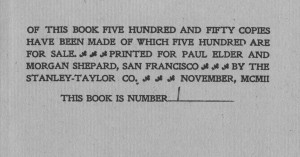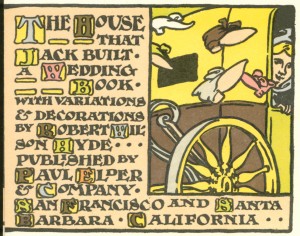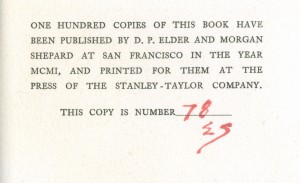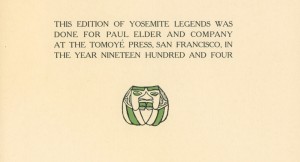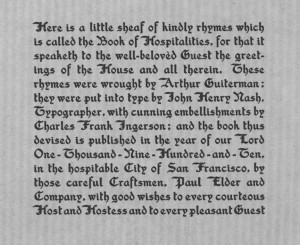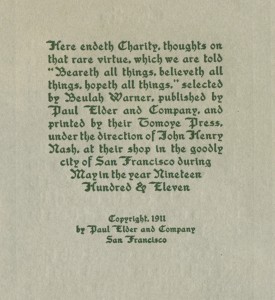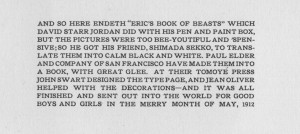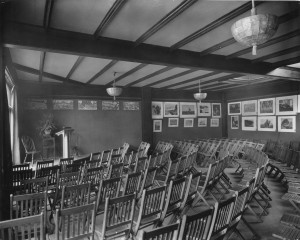Paul Elder & Co. published twelve titles directly or indirectly related to the 1915 Panama-Pacific International Exposition. Each title below is preceded by its checklist number.
11. The Architecture & Landscape Gardening of the Exposition
16. The Art of the Exposition
46. California and The Opening of Gateway Between the Atlantic and the Pacific (not published until 1916)
47. California, a Poem
54. Catalogue De Luxe of the Department of Fine Arts, Panama-Pacific International Exposition (two volumes)
106. The Fourth-Dimensional Reaches of the Exposition
109. The Galleries of the Exposition
126. Holland, An Historical Essay
162. Little Bronze Playfellows
197. Nature and Science on the Pacific Coast
227. The Palace of Fine Arts and Lagoon
278. The Sculpture and Mural Decorations of the Exposition
Additionally, Elder published two books for the Panama-California Exposition in San Diego, which opened just a few weeks after the PPIE and stayed open a year longer:
12. The Architecture and Gardens of the San Diego Exposition
271. The San Diego Garden Fair
